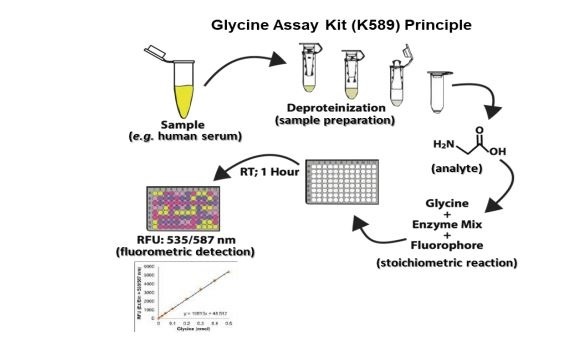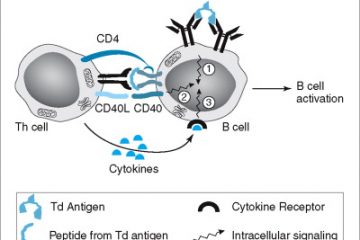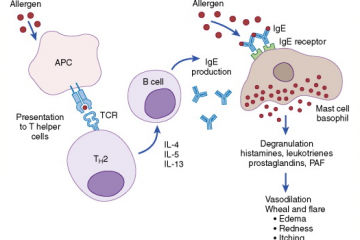Description
ATPase (Adenosine Triphosphatase: EC 3.6.1.3) is a vital enzyme for sustaining the cell membrane potential, transporting ions and regulating mobile quantity. It catalyzes the decomposition of ATP into ADP and a free phosphate ion. The hydrolysis of ATP is extremely exergonic releasing power that’s utilized in a number of mobile processes. There are many lessons of ATPases together with Na+/Okay+ -ATPase, H+/Okay+ -ATPase, Ca2+ -ATPase, and so forth. The deficiency of mitochondrial ATPase is severe: for instance, Na+/Okay+-ATPase deficiency will increase anxiety-related conduct, whereas Ca2+ -ATPase deficiency results in exertional muscle ache syndrome. Therefore, correct detection of ATPase exercise is effective for the prognosis and mechanistic research of a few of these illnesses. BioVision’s ATPase Activity Assay equipment gives a fast and simple technique for monitoring ATPase exercise in numerous samples. In the assay, ATPase hydrolyzes ATP releasing ADP and a free phosphate ion, and thru linked reactions, a robust, steady chromophore is generated (OD 650 nm). The assay is easy, delicate, excessive -throughput adaptable and may detect ATPase Activity lower than 0.005 U/L
Cat # +SizeK417-100Dimension100 assaysKit Summary• Detection method- Colorimetric (OD 650 nm)
• Species reactivity- Mammalian
• Applications- The assay is designed to measure ATPase exercise in organic samples with detection sensitivity ~5 mU/lDetection MethodologyColorimetric (OD 650 nm)Species ReactivityMammalianApplicationsFast evaluation of ATPase exercise in organic samples or recombinant ATPase preparationsFeatures & Benefits• Simple process; takes lower than 1 hour
• Fast and handyKit Components• ATPase Assay Buffer
• ATPase Substrate
• ATPase Developer
• Phosphate Standard (10 mM)
• ATPase Positive ControlStorage ConditionsMultiple TemperaturesShipping ConditionsGel PackUSAGEFor Research Use Only! Not For Use in Humans.

atpase assay buffer
ATP Colorimetric Fluorometric Assay Kit from BioVision
ATP is the first power forex of residing methods. Virtually all power requiring processes make the most of the chemical power saved within the phosphate bond of ATP. ATP is fashioned solely within the mitochondria and a wide range of genetic illnesses can have an effect on ATP formation within the mitochondria. There are plenty of commercially obtainable ATP assays which detects femtomoles or much less of ATP by measuring luminescence (BioVision Kit 254-200, for instance) however these kits require specialised luminescence instrumentation and make the most of luciferase which could be troublesome to take care of in lively type. BioVision newly developed ATP Colorimetric and Fluorometric Assay equipment is designed to be a strong, easy technique which makes use of the phosphorylation of glycerol to generate a product that’s simply quantified by colorimetric (λmax = 570 nm) or fluorometric (Ex/Em = 535/587 nm) strategies. The assay can detect as little as 50 picomol (1 µM) of ATP in numerous samples. The equipment gives adequate reagents for 100 assays

Atpase assay
Introduction:
Adenosine-5’-triphosphate (ATP) is a central molecule within the chemistry of all residing issues and is used to observe many organic processes. An correct, dependable technique to detect minute ATP ranges such because the Luciferase/Luciferin system has broad software. Conventional Luciferase/Luciferin ATP detection methods are unstable since luciferase loses exercise quickly. At BioVision, we’ve developed a extremely steady Luciferase; a genetically modified variant derived from the Luciferase of Diaphanes pectinealis (Chinese Firefly) endemic to Yunnan province, China. We designate our recombinant extremely steady luciferase rLucHS. Compared to the traditional phenotype of Photinus pyralis, rLucHS gives enhanced stability, glorious sensitivity, and a broader and extra physiologically related efficient pH vary. At all pH’s beneath ~ 8.2, rLucHS has a considerably larger relative exercise than Photinus luciferase and is steady for weeks at room temperature and > 60 minutes at 37°C. Using the protocol outlined right here, the quantitation vary is between roughly 1 nmol to 10 fmol/assay. The particular exercise of rLucHS is ~ 5 x 1011 RLU/mg protein. The assay could be totally automated for top throughput (1sec/pattern) and is extraordinarily delicate and is right for detecting ATP manufacturing or consumption in a wide range of processes and enzymatic reactions.
[Linking template=”default” type=”products” search=”Atpase Assay buffer” header=”3″ limit=”16″ start=”1″ showCatalogNumber=”true” showSize=”true” showSupplier=”true” showPrice=”true” showDescription=”true” showAdditionalInformation=”true” showImage=”true” showSchemaMarkup=”true” imageWidth=”” imageHeight=””]


